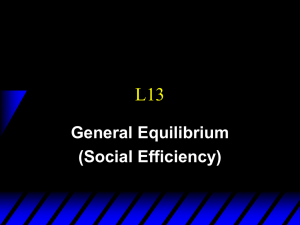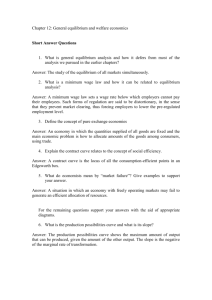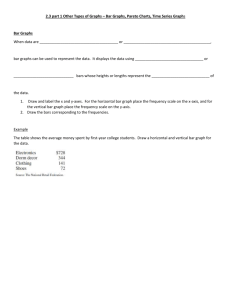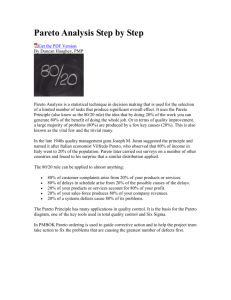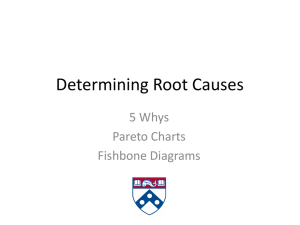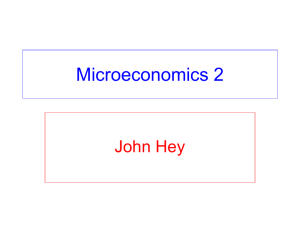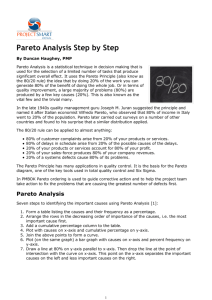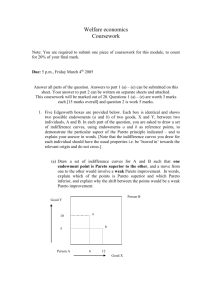Advanced Version
advertisement
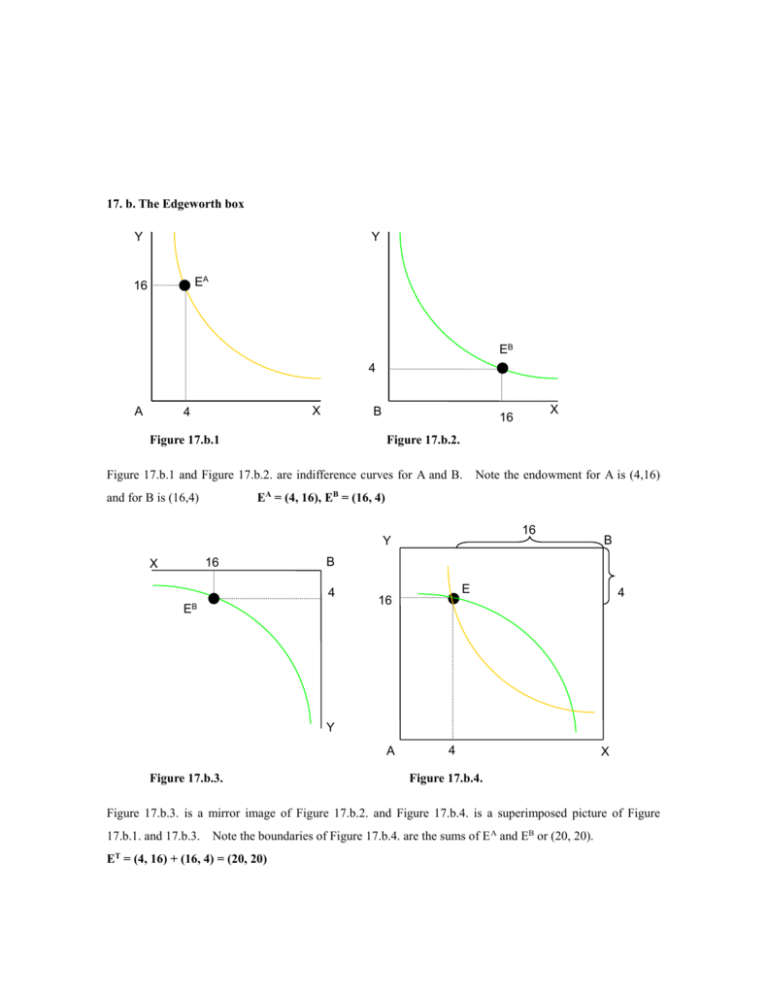
17. b. The Edgeworth box
Y
Y
EA
16
6
EB
4
A
X
4
B
Figure 17.b.1
Figure 17.b.2.
Figure 17.b.1 and Figure 17.b.2. are indifference curves for A and B.
Note the endowment for A is (4,16)
EA = (4, 16), EB = (16, 4)
and for B is (16,4)
16
Y
16
X
X
16
B
B
4
EB
E
16
4
Y
A
Figure 17.b.3.
4
X
Figure 17.b.4.
Figure 17.b.3. is a mirror image of Figure 17.b.2. and Figure 17.b.4. is a superimposed picture of Figure
17.b.1. and 17.b.3.
Note the boundaries of Figure 17.b.4. are the sums of E A and EB or (20, 20).
ET = (4, 16) + (16, 4) = (20, 20)
Y
B
4
Both A and B
worse off
3
E
E*
Both A and
2
1
B better off
4
A
X
Figure 17.b.5.
Figure 17. b.5. is a general edgeworth box.
A will be happier or be better in the region 1 and 3, and will be
worse in region 2 and 4 from endowment E.
On the other hand, B will be better in region 1 and 2, and will
be worse in region 3 and 4 from endowment E.
and B will be satisfied.
Region 1 is called area of Pareto Suboptimal, where both A
E* is the point where the indifference curves of A and B are tangent to each other,
which is called Pareto optimal or Pareto Efficiency.
Y
B
Contract curve
X
A
Figure 17.b.6.
Generally, there are many Pareto Efficiencies, or indifference curves of A and B, that are tangent to each other.
The line going though each Pareto Efficiency is called the contract curve.
Example
1. There are two consumers:
eA = (6, 4)
uA (x, y) = x1/3 y2/3
eB = (9, 6)
uB (x, y) = x1/2 y1/2
Sketch an Edgeworth box, show endowments, the region of Pareto suboptimal, and the contract curve.
Solution
eT = (6, 4) + (9, 6) = (15, 10)
uA (x, y) = x1/3 y2/3 = 61/3 42/3 = 4.58
uB (x, y) = x1/2 y1/2 = 91/2 61/2 = 7.35
Y
B
10
Contract curve
uB (x, y) = 7.35
4
The region of Pareto suboptimal
E
uA (x, y) = 4.58
A
6
15
X
Figure 17.b.7
MRSA =
MRSB =
y
2x
(Cobb-Douglas)
10 y
15 x
Let MRSA = MRSB
y
10 y
=
2x
15 x
y ( 15 + x) = 20 x,
,
15y – yx = 20x – 2xy,
y=
20 x
15 x
15y + xy= 20x
2. There are two consumers
eA = (6, 4)
uA (x, y) = x + 2y
eB = (9, 6)
uB (x, y) = min{x, y}
Sketch an Edgeworth box, show endowments, the region of Pareto suboptimal, and the contract curve.
Solution
eT = (6, 4) + (9, 6) = (15, 10)
y = 7 – 0.5 x
uA (x, y) = x + 2y = 6 + 8 = 14
uB (x, y) = min{x, y}
Y
B
uA (x, y) = x + 2y = 14
Contract curve
E
4
The region of Pareto suboptimal
A
6
Figure 17.b.8
uB (x, y) = min {x, y}
X
15

